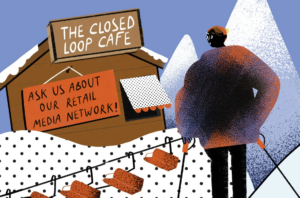In a new update to its US ad forecast, Magna has slightly boosted its overall US ad forecast for this year and next, thanks to rising consumer confidence and other signs of life in the US economy. However, digital is the only media channel expected to see notable growth in 2013 (+11.5% in total interactive spend). That’s a significant drop from the 14 to 15% growth rate Magna measured in 2012, which is normal as digital commands an ever larger slice of the pie.
“Reaching such high market share – 26 to 27% – [digital spending growth] has to slow down because there is less money each year from print budget or TV budget to be transferred,” said Vincent Letang, Magna’s Director of Global Forecasting. “The overall pie doesn’t grow significantly.”
Letang says display and video ad prices will further deflate this year due to surging supply and wider adoption of programmatic mechanisms, according to Magna Global. If there’s good news for the sell side, it lies in cost savings linked to selling efficiencies
AdExchanger spoke with Letang this morning.
AdExchanger: Why the display price deflation?
VINCENT LETANG: It’s due to two things. One is the explosion of supply. With the basic rules of supply and demand, you can expect the cost per unit to go down when supply explodes and demand doesn’t grow as quickly.
Also a factor in the deflation of CPMs is how new trading mechanisms such as programmatic buying effect display, specifically remnant inventory, non-premium websites and commoditized banner formats.
Volume keeps growing but prices don’t grow as fast. In some segments and formats, prices go down, and that’s how we end up with low double-digit growth.
You hear a lot that programmatic media buying is driving down prices. But that wasn’t a foregone conclusion one or two years ago. Or so many people on the sell side hoped.
It’s difficult to indeed predict, when you have complete transparency of demand and supply, what you’ll end up having. Yes, in some cases you see CPMs going up. But I still think that in most cases you’ll see them going down. And it will be OK, because from a seller’s perspective you’ll sacrifice CPM against a bigger volume of sales. You’ll be able to sell more inventory or a bigger percentage of your potential inventory.
AdExchanger Daily
Get our editors’ roundup delivered to your inbox every weekday.
Daily Roundup
And even if you don’t grow your revenue at all – i.e. the volume increase is just offsetting the CPM decrease – at least you can expect to save on the cost of sales. You don’t need as many staff, and the staff will spend less time on remnant inventory so they can dedicate more time to business development and premium.
Do you view these price pressures on display as being a sustained trend over the last period of years, or something more recent?
For some formats such as video, I think it’s over the last two years that we’ve seen costs plateauing and starting to decrease. And surely it’s related to the convergence of trading with TV inventory – the alignment on the buying side between TV buying and digital buying. And also the volume. Advertisers were happy to pay a premium…for online video compared to broadcast when it was relatively small money. Now it’s at the point where they want to make sure they’re paying the right price. And there are more tools to benchmark the cost.
Thoughts on the mobile impact on ad spend and price this year and next?
Mobile doubled last year and the year before. In 2013 we assume it’s going to slow down a little bit. 60% growth would bring it to $5.5 billion. That would be 13% of total internet advertising. That’s really big. And because the pie is not growing that much, it’s at the expense of other digital formats to a certain extent. It’s participating in the deflation for traditional digital formats.















